Multispectral Pulsed Photobiomodulation Enhances Diabetic Wound Healing via Focal Adhesion-Mediated Cell Migration and Extracellular Matrix Remodeling
- PMID: 40650010
- PMCID: PMC12249928
- DOI: 10.3390/ijms26136232
Multispectral Pulsed Photobiomodulation Enhances Diabetic Wound Healing via Focal Adhesion-Mediated Cell Migration and Extracellular Matrix Remodeling
Abstract
Chronic diabetic wounds affect 15-20% of patients and are characterized by impaired healing due to disrupted hemostasis, inflammation, proliferation, and extracellular matrix (ECM) remodeling. Low-level light therapy (LLLT) has emerged as a promising noninvasive strategy for enhancing tissue regeneration. Here, we developed a multispectral pulsed LED system combining red and near-infrared light to stimulate wound healing. In vitro photostimulation of human keratinocytes and fibroblasts on biomimetic hydrogels enhanced adhesion, spreading, migration, and proliferation via increased focal adhesion kinase (pFAK), paxillin, and F-actin expression. In vivo, daily LED treatment of streptozotocin-induced diabetic wounds accelerated closure and improved ECM remodeling. Histological and molecular analyses revealed elevated levels of MMPs, interleukins, collagen, fibronectin, FGF2, and TGF-β1, supporting regenerative healing without excessive fibrosis. These findings demonstrate that multispectral pulsed photobiomodulation enhances diabetic wound healing through focal adhesion-mediated cell migration and ECM remodeling, offering a cost-effective and clinically translatable approach for chronic wound therapy.
Keywords: cell migration; diabetic wound; extracellular matrix (ECM) remodeling; focal adhesion; low-level light therapy (LLLT).
Conflict of interest statement
The authors declare no competing interests.
Figures
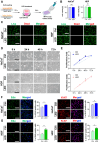

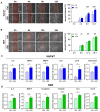

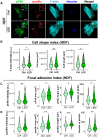
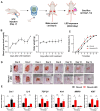
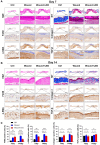
Similar articles
-
Therapeutic potential of near-infrared polychromatic light in hyperglycemic human cell models: Toward improved diabetic wound healing.J Photochem Photobiol B. 2025 Sep;270:113224. doi: 10.1016/j.jphotobiol.2025.113224. Epub 2025 Jul 8. J Photochem Photobiol B. 2025. PMID: 40674824
-
Polynucleotide and Hyaluronic Acid Mixture for Skin Wound Dressing for Accelerated Wound Healing.Tissue Eng Regen Med. 2025 Jun;22(4):515-526. doi: 10.1007/s13770-025-00712-1. Epub 2025 Feb 26. Tissue Eng Regen Med. 2025. PMID: 40009152
-
Post-transcriptional regulation of diabetic wound healing by junctional adhesion molecule A/miR-106b axis.Burns. 2025 Aug;51(6):107527. doi: 10.1016/j.burns.2025.107527. Epub 2025 May 8. Burns. 2025. PMID: 40359641
-
Topical antimicrobial agents for treating foot ulcers in people with diabetes.Cochrane Database Syst Rev. 2017 Jun 14;6(6):CD011038. doi: 10.1002/14651858.CD011038.pub2. Cochrane Database Syst Rev. 2017. PMID: 28613416 Free PMC article.
-
Extracellular Matrix-Derived Hydrogels to Augment Dermal Wound Healing: A Systematic Review.Tissue Eng Part B Rev. 2022 Oct;28(5):1093-1108. doi: 10.1089/ten.TEB.2021.0120. Epub 2021 Dec 30. Tissue Eng Part B Rev. 2022. PMID: 34693732
References
MeSH terms
Grants and funding
LinkOut - more resources
Full Text Sources

